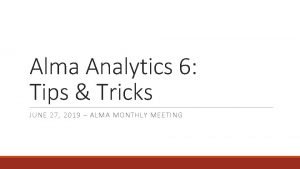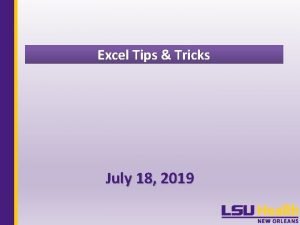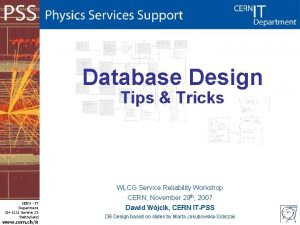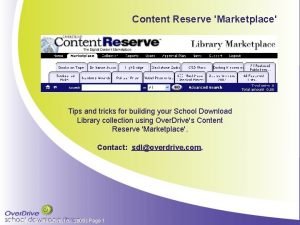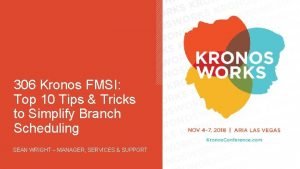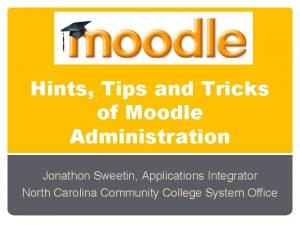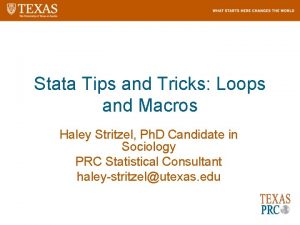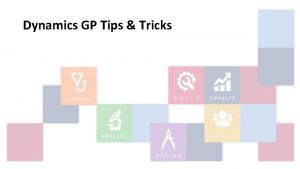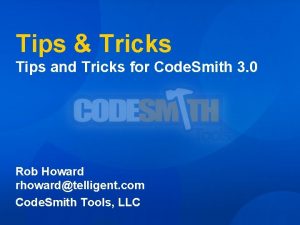Alma Analytics 6 Tips Tricks JUNE 27 2019











- Slides: 11

Alma Analytics 6: Tips & Tricks JUNE 27, 2019 – ALMA MONTHLY MEETING

A quick review Ø The pulldown menu that includes Filters also allows you to: Ø Specify how the results should be sorted Ø Put SQL functions and execute mathematical operations in a column Ø Control the display of a column

Output to work with You’ve got a result—now get it out of Analytics! Ø Option 1: Export as Excel Ø Fields export in the order they appear on the Results tab Ø Change the Column Format to “Repeat” if you don’t want this blank space: Ø Output limited to about 65, 000 rows

Output, page 2 Ø Option 2: Export as Tab-Delimited format Ø Fields export in the order they appear on the Criteria tab Ø Column values will automatically repeat Ø To open the file (. csv) in Excel: 1. Open a blank Excel workbook 2. Click on the Data tab; choose Get External Data > From Text 4. Select your. csv file and click Import 5. Go through the Text Import Wizard 6. File type is Delimited; data has headers 7. Delimiter is Tab 8. IMPORTANT! Change all columns with all-numeric strings (MMSID, Barcode, etc. ) from a General to a TEXT data type – otherwise Excel treats them as numbers, and that’s bad 9. Once data is imported, save the file as Excel (. xlsx) Ø Output capability about 500, 000 rows

Counting things w/o yellow rectangles Ø The first folder in a subject area always contains numerical values (“measures”) Ø “Physical Item Details”, for example, gives item and loan counts Ø What if you want to count titles, or something else without yellow rectangles? Ø (There is a subject are called Titles, which includes title counts!) Ø But if there wasn’t: Ø Add a field that you DON’T need in your results, that should appear in every record, and be unique (record IDs and barcodes are good) Ø Choose “Edit Formula” in the pulldown Ø Change the formula from "Bibliographic Details". "MMS Id“ to COUNT("Bibliographic Details". "MMS Id“) Ø How would you count number of users per patron group?

Bibs/Holdings/Items Bib Holdings Items Title/author/ publisher/date HBL/stack call number v. 1/<barcode> v. 2/<barcode> AVPT/stack call number v. 2/<barcode>

What the previous slide means Ø In “Bibliographic Details”: Ø Separate monograph/serial: “Bibliographic Level” = m or s Ø Simple format separation: “Material Type” Ø Detailed format separation: “Resource Type” Ø In “Holdings Details”: Ø “Permanent Call Number” for display Ø “Normalized Call Number” for sorting Ø In “Location”: “Library Code/Name” and “Location Code/Name” Ø In “Physical Item Details”: Ø Enum/chron: “Description” Ø Don’t forget that bibs/holdings/items each have a lifecycle!

Match a list of ISSNs/ISBNs Such as a list from a publisher or vendor – Ø Use Physical Items OR E-Inventory OR Titles – it doesn’t matter because you will use only the Bibliographic Details dimension 1. Format the file of ISSNs/ISBNs with one value per line; remove all hyphens 2. Add “Normalized ISSN” or “Normalized ISBN” AND “MMS Id” to your analysis 3. Under Filters in the normalized-whatever pulldown, click the binoculars on the first popup box 4. Click the little pencil on the next popup box 5. Paste your list of ISSNs/ISBNs into the 3 rd popup, then click “OK” on each box Ø BE AWARE that cataloging practice tends to put all associated ISSNs/ISBNs in the bib record, both print and electronic, so to find out the format of a title, add “Resource Type” to your analysis

Getting more detail on the ISSN/ISBN list The previous analysis can include titles we hold in both print and electronic formats. How would you use it to get format-specific detail: the library/location; the barcode; the electronic collection, and so on? This is information that’s NOT in “Bibliographic Details”. Ø In either Physical Items OR E-Inventory, construct an analysis with all the fields you want, including MMS Id Ø Filter MMS Id like this: Use the previous analysis in “Saved Analysis” Ø Repeat for the other subject area

New Titles List for Library X Otherwise known as, “There’s more than one way to skin a cat. ” Ø Approach #1: Use Funds Expenditure and limit by fund and date Ø Problem: Doesn’t include gifts Ø Approach #2: Use Physical Items Ø Use “Bibliographic Details”. ”Creation Date” as a proxy for purchase/receipt date Ø Limit by library Ø Problem: Might miss second copies Ø Problem: What if old materials are being cataloged? How to resolve?

New Titles List for Library X, continued Ø Approach #3: Use Physical Items Ø Use “Physical Item Details”. ”Creation Date” as a proxy for purchase/receipt date Ø Limit by library Ø To eliminate old books, use “Bibliographic Details”. ”Begin Publication Date” “Is greater than” <date about 10 -20 years ago> Don’t forget that our new receipts include e-books! Ø Use E-Inventory Ø Use “Portfolio”. ”Creation Date” as the parallel to item create date Ø Use “Electronic Collection”. ”Electronic Collection Public Name” for provider
